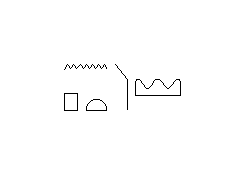
Napata (Eg. Npt) is a town founded by the Egyptians in the 18th Dynasty near the fourth cataract, in the southernmost part of Nubia. Thutmosis I had laid claim to this region, in his second regnal year he conducted a military campaign to Upper Nubia which probably destroyed Kerma. Napata was perhaps founded by Thutmosis III, but the first time that Napata is mentioned by name is on the Amada stela of Amenhotep II, who hung one of the seven Syrian chiefs he had conquered on the walls of Napata.
Napata was important as a southern boundary town, and as a storage area for goods from Africa. The Egyptians founded a local cult for Amun of Thebes, who was worshipped here with a ram's head.
Napata rose in importance in the 9th century BC when it became the residence of the new Kushite kingdom, with Amun of Napata as its most important national god. The rulers of the 25th Dynasty were born, crowned and buried at Napata, and even after the capital had moved to Meroe, Napata remained the coronation city.
The huge temple of Gebel Barkal near Napata was the religious centre of the kingdom, and the priests of Amun, who acted as the god's mouthpiece, had enormous power. They arranged the succession for the king, advised the ruling king, and could even order him to commit suicide if he was old or sick.
In the 3rd century BC, the power of the priests was broken when a king who had been ordered to commit suicide had them all executed. The royal necropolis was moved to Meroe, and the Egyptian language and culture fell into disuse. The final demise of Napata in 23 BC happened after a raid by the Kushites during their fight against the Roman rulers of Egypt. They attacked Aswan and stole several statues of Augustus. Napata was then destroyed by the Romans. It was rebuilt, but probably only had a short revival. Investigation of the ruins of Napata is in full swing; more than three temples have been uncovered so far.